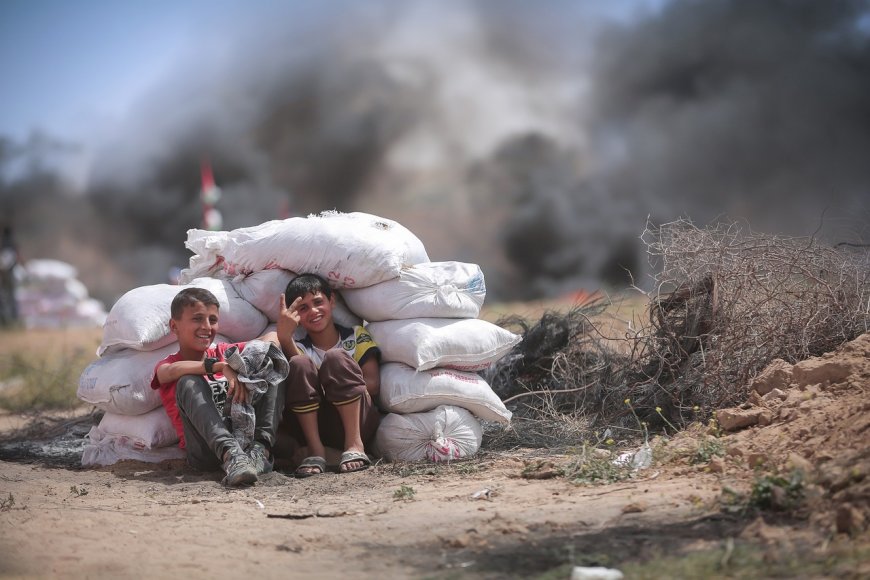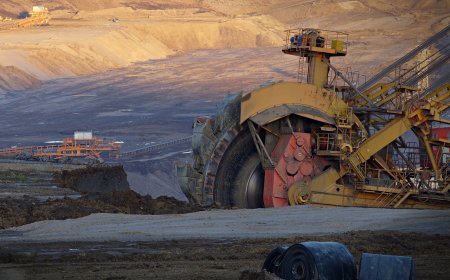What is left for Gaza? Water, air and land damaged by war
Report from any agency should alert all parties concerned about Gaza's future habitability.

MOSAIC-INDONESIA.COM, JAKARTA — The genocidal campaign waged by the Israeli army in the Gaza strip is coming to an end. A ceasefire deal struck on Wednesday (15/1/2025), implemented four days after the agreement, will withdraw Israeli forces from the besieged enclave along with the release of the hostages.
After 460 days over Gaza carpet bombings, how is the environmental damage? A Wilson Center report released in 2024, states that Israel's policies toward the Palestinians, including the blockade of Gaza, have been widely criticized among scholars, policy experts, and human rights activists even before the war. They argue how much environmental damage Israel is doing to Gaza. For example, access to healthy drinking water in Gaza has been significantly reduced due to Israeli attacks on vital infrastructure. There is 97% of accessible water fails to meet WHO standards.
Other attacks such as the destruction of rainwater harvesting channels and the flattening of farmland exacerbate environmental degradation and have increased the risk of flooding in Gaza. At COP 28 in Dubai which took place just one month after the war started, the Palestinian delegation stressed the priority of human life rather than initiating climate action. What is presented is not wrong, although the two goals should not be seen as contradictory.
A report by the Conflict and Environmental Observatory (Ceobs) reveals that fighting in Gaza since October 7 has devastated the enclave. War has destroyed livelihoods, natural resources, and ecosystems. The intensive use of explosive weapons has produced more than 42 million tons of debris and caused nearly 2 million people to be displaced within the country.

This debris, which can be contaminated with asbestos and other polluting building materials, may also contain unexploded ordnance and biological waste. Chronic inhalation exposure to building materials destroyed as a result of the use of explosive weapons has been going on for months. In addition, the management of household solid waste has failed, resulting in the emergence of informal landfills that pose health and environmental risks.
A heat map of Gaza showing the intensity of the damage, with insert images of various forms of damage, including farmland damage to critical infrastructure and solid waste issues.
The water, sanitation, and hygiene (WASH) system in Gaza is on the verge of complete collapse. Satellite imagery shows that more than half of the water wells, pumping stations, storage tanks, and desalination plants in Gaza have been damaged or destroyed; no desalination plants are currently in operation.
At October 2024, the Palestinian Water Authority reported that more than 85% of Gaza's water and sewage facilities were not fully or partially operational due to severe damage to critical infrastructure, including wastewater treatment plants, desalination stations, pumping stations, wells, water tanks, and major pipelines. Daily water production has dropped by up to a third of prewar levels due to damage and power outages, as well as border restrictions on humanitarian aid that restrict imports from Israel.
This damage resulted in the dumping of raw sewage into the Mediterranean, and contributed to the growing crisis of waterborne diseases, particularly among children. Contamination of groundwater resources associated with the conflict arose from infiltration of surface pollution, as well as the decision of the Israel Defense Forces (IDF) to pump seawater into a network of tunnels under Gaza. This will further harm Gaza's aquifers, which have been degraded by excessive water abstraction for decades, and contribute to deteriorating water quality and scarcity.
In Gaza, agricultural land and resources have been severely degraded. As of September 2024, UNOSAT and FAO reported that 67% of Gaza's agricultural land had been damaged; this included 71.2% of orchards and other trees, 67.1% of food crops, and 58.5% of vegetables. Sources of damage include traces of heavy vehicles, destruction and intentional firing. Gaza's agricultural infrastructure was also destroyed, with 1,188 agricultural wells (52.5%) and 577.9 hectares of greenhouses (44.3%) damaged.
The climate death clock is already ticking in Gaza. The report from any agency assessed should alert all parties concerned about Gaza's eligibility to be inhabited in the future. Civilian infrastructure can be rebuilt, environmental damage, and subsequent health damage cannot be ignored. For example, debris from bomb fragments has infiltrated the air in Gaza. This can lead to long-term health complications, such as an increased risk of cancer and respiratory diseases as well as worsening health conditions for more than 350,000 Gazans with chronic health conditions.
In addition, carbon emissions are incomparable: since the first months of the war. It is estimated that Israeli bombing carried more than 25,000 tons of explosives, producing more than 281,000 tons of CO2 in the first six weeks of the war. Rainfall in Gaza is even projected to be erratic and decrease by up to 20% by 2050. This densely populated and resource-poor region is caught in a vicious circle of conflict and climate change.







